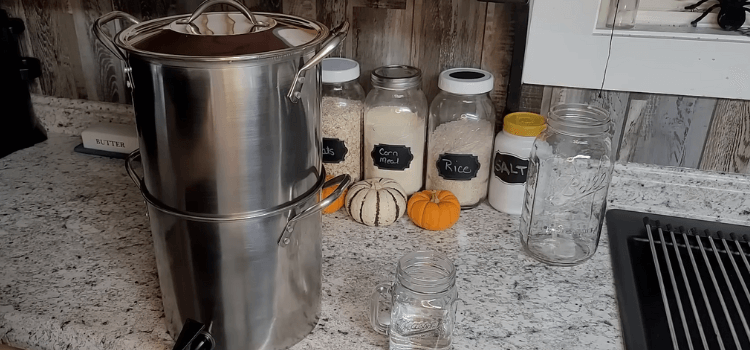As an Amazon Associate, I earn from qualifying purchases.
Access to clean drinking water is a basic human need crucial for survival, yet millions worldwide still grapple with the challenge of obtaining safe and potable water. While commercial water filtration systems are widely available, they can be expensive and may not always be accessible, especially in remote areas or during emergencies. However, with a little ingenuity and some basic materials, you can create your own gravity water filter system right at home. In this article, we’ll explore the world of DIY gravity water filters, from understanding the principles behind them to building your own and even comparing them with commercial options.

Understanding Gravity Water Filtration
Utilizing the force of gravity, gravity water filtration emerges as a straightforward yet potent technique for purifying water, effortlessly guiding it through a filtration medium. This process typically involves a container or reservoir filled with untreated water, which then flows through one or more filtration elements, removing impurities and contaminants along the way. The filtered water collects in a separate chamber or receptacle, ready for consumption.
Advantages of DIY Gravity Water Filters
Cost-effectiveness
One of the primary advantages of DIY gravity water filters is their cost-effectiveness. While commercial filtration systems may come with a hefty price tag, opting to gather your materials and construct your filter offers a budget-friendly alternative without compromising on effectiveness.
Customization options
DIY gravity water filters also grant you the freedom to tailor the design according to your unique requirements and personal preferences, adding another layer of versatility to the process. Whether you’re filtering water for everyday use at home or for outdoor adventures, you can tailor the filter system to meet your requirements.
Sustainability
DIY gravity water filters are also environmentally friendly and sustainable. By using readily available materials and reducing reliance on single-use plastic water bottles, you can minimize your ecological footprint while still ensuring access to clean and safe drinking water.
Necessary Components for Building a DIY Gravity Water Filter
To build your own DIY gravity water filter, you’ll need a few basic components:
- Container: Choose a clean and food-safe container to hold the untreated water. This could be a large plastic bucket, a stainless steel drum, or even a ceramic pot.
- Filter elements: Select appropriate filtration media such as activated carbon, ceramic filters, or cloth to remove impurities from the water.
- Spigot/faucet: Install a spigot or faucet near the bottom of the container to allow for easy access to the filtered water.
- Lid: Cover the container with a lid to prevent contaminants from entering the filtration system.
Step-by-Step Guide to Building Your DIY Gravity Water Filter
Preparing the container
- Choose a container: Select a suitable container based on your filtration needs and available space.
- Clean the container: Thoroughly clean and sanitize the container before assembling the filter system.
Assembling the filtration system
- Insert filter elements: Place the filtration media inside the container, ensuring proper placement and coverage.
- Create layers: If using multiple filtration media, layer them according to particle size, with the finest media closest to the outlet.
- Secure the lid: Seal the container with a lid to prevent contamination from entering the filter.

Installing the spigot/faucet
- Drill a hole: Using a drill or appropriate tool, create a hole near the bottom of the container for the spigot or faucet.
- Install the spigot/faucet: Attach the spigot or faucet securely to the container, ensuring a tight seal to prevent leaks.
Testing the filter
- Fill the container: Pour untreated water into the container and observe the filtration process.
- Check for leaks: Inspect the filter system for any leaks or signs of malfunction.
- Collect filtered water: Open the spigot/faucet and collect the filtered water for testing and consumption.
Maintenance and Care for DIY Gravity Water Filters
Ensuring peak performance and durability for your DIY gravity water filter necessitates regular maintenance and attentive care.
- Regular cleaning: Clean the filter elements periodically to remove buildup and maintain filtration efficiency.
- Replacing filter elements: Replace worn or clogged filter media as needed to ensure continued effectiveness.
- Inspecting for leaks: Check the filter system regularly for any leaks or damage that may compromise its integrity.
Applications and Uses of DIY Gravity Water Filters
The versatility of DIY gravity water filters extends to their wide array of applications, making them suitable for diverse scenarios, such as:
- Camping and outdoor activities: Provide clean drinking water while camping, hiking, or exploring remote areas.
- Emergency preparedness: Ensure access to safe Securing access to safe water becomes crucial during emergencies like natural disasters or power outages.
- Rural communities: Address water scarcity issues in rural or underserved communities where access to clean water is limited.
Comparing DIY Gravity Water Filters with Commercial Options
Cost comparison
While commercial water filtration systems boast convenience and advanced features, they typically accompany a higher price tag when compared to their DIY counterparts.
Effectiveness comparison
Both DIY and commercial gravity water filters can effectively remove contaminants from water, but commercial options may offer higher filtration rates and additional features.
Customization options
DIY gravity water filters provide greater flexibility and customization options compared to commercial products, allowing users to tailor the filter system to their specific needs and preferences.
Safety Considerations
When building and using DIY gravity water filters, it’s important to keep safety in mind:
- Proper sanitation practices: Ensure all components are clean and sanitized to prevent bacterial contamination.
- Monitoring water quality: Regular testing of the filtered water is imperative to confirm its compliance with safety standards and it’s freedom from harmful contaminants.
Conclusion
DIY gravity water filters offer a cost effective, customizable and sustainable solution for providing clean and safe drinking water in various settings. Understanding the principles of gravity water filtration and adhering to a straightforward step-by-step guide empowers you to craft your own filter system, tailored precisely to your needs and preferences. Whether it’s for camping, emergency readiness, or daily utility, DIY gravity water filtration offers a versatile solution.
As an Amazon Associate, I earn from qualifying purchases.
About The Author
Hi, this is Rise N Dine ATL. To learn more about us, visit the About Us page.
Leave a Reply